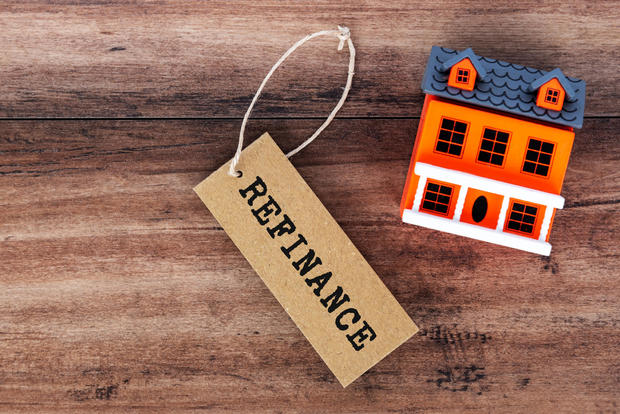Refinancing your mortgage? 3 things to consider first
With inflation remaining stubborn and the prospects for relief unknown, it can be difficult to make ends meet for many Americans. This is especially true for homeowners burdened with a hefty mortgage payment to make each month.
Mortgage refinance rates hovered around historic lows in recent years and have since ticked up. But they may still be low enough for homeowners with high interest rates to benefit. It all depends on what the initial rate was and how much lower they can get with the current one. A rate that's just a single point lower can save thousands of dollars over the duration of the loan.
If you're looking to get a better rate or change your loan term, then start exploring your mortgage refinance options here now or use the table below to check your eligibility.
3 mortgage refinance considerations
Mortgage terms are often set at 30 years, which makes the possibility of paying off the debt quickly unlikely. However, you can always refinance your mortgage.
Mortgage refinancing offers the homeowner two major benefits. It can reduce the cost of the mortgage payment by replacing the current loan with a newer one with a lower interest rate and it can help expedite the pay-off from the initial 30 years to a shorter time frame like 20 or 15 years.
As you embark on the mortgage refinance process, make sure you take these factors into consideration:
Your long-term plans for your home
Are you in your "forever home"? Don't have plans to move anytime soon? Then mortgage refinancing probably makes sense for you and your budget. The money you could potentially save by paying a lower interest rate can help pay other bills, be used for household repairs or can be saved each month instead.
Find out if you can benefit from a refinance today. Check out today's rates and see what you can qualify for or simply get started by using the below table.
Just remember, if you're not sure about your long-term plans and are seriously considering moving in the immediate future - or even in the next five years - mortgage refinancing probably isn't for you. That's because, just like a traditional mortgage, you'll have to pay closing costs on your new loan. Closing costs can range in price and average around $7,000.
For example: if your new rate is $100 cheaper a month but you paid $7,000 to close on the refinance, it would take almost six years before you broke even. Again, if you're planning on staying in the home long-term then it probably makes sense. If not, then reconsider.
PMI Removal
Private mortgage insurance is required by most lenders when the deposit the homebuyer puts down is less than 20%. This is usually rolled into the monthly mortgage payment.
However, you may be able to have the PMI removed by refinancing (assuming your home value has increased since the initial purchase or you have no reached the 20% threshold). This is particularly applicable in the current economic environment, with rising home prices. If the value of your home has increased in recent years then a refinance could help reduce your interest rate while also knocking off the PMI.
A higher monthly payment
A lower interest rate doesn't automatically mean a lower payment each month. The length of time you're refinancing into matters, too. You have to decide which is the best option for you.
For example, a $300,000 mortgage at a 6% interest rate over 30 years would cost around $1800 a month. That same mortgage, at a lower rate of 4% spread out over 15 years, would cost $2200 monthly - $420 more. That's because, despite the interest rate decrease, the loan pay-off time was cut in half.
That doesn't necessarily mean that the refinance is still not worth pursuing. Paying a mortgage off early is beneficial for many homeowners. It's just something to be aware of when weighing the pros and cons. In this example: Is the larger monthly mortgage worth paying if it reduces the length of the loan? Only the homeowner can answer that question.
As with many personal financial decisions, mortgage refinancing is unique to your own circumstances and preferences. With refinance rates as low as they have been in recent years, it may make sense to pursue this option. Just make sure you're well-versed in the pros and cons before acting.
If you think you would like to refinance before rates change, you can start the process now. Or simply use the table below to crunch the numbers.
Consider cash-out refinancing or a reverse mortgage
Depending on your personal financial situation and your goals a cash-out refinancing or reverse mortgage may be appealing alternatives to a traditional refinance. Here's how each works:
- Cash-out refinancing: This is when you take out a new mortgage loan for an amount larger than what you owe on your current loan. You then use the new loan to pay off the current one and take the difference (between the loans) as cash for yourself.
- Reverse mortgage: A reverse mortgage allows homeowners (62 and older) who have completely paid off or paid off most of their mortgage, to take out a portion of their home's equity. This would qualify as tax-free income. It needs to be repaid, however, if the homeowner dies or elects to sell the home.






